A Type of Pipe or Vessel
LK Die Casting Machine / 2024-09-30 08:38:33
2024-09-30 by Cherry
Introduction
In modern manufacturing, die-casting machines, as an important
industrial production equipment, play a key role in manufacturing
various metal parts. Pipes or Vessels also have an indispensable
position in the die-casting machine system. Although they
seem ordinary, they have a vital impact on the performance,
efficiency, and product quality of the die-casting machine.
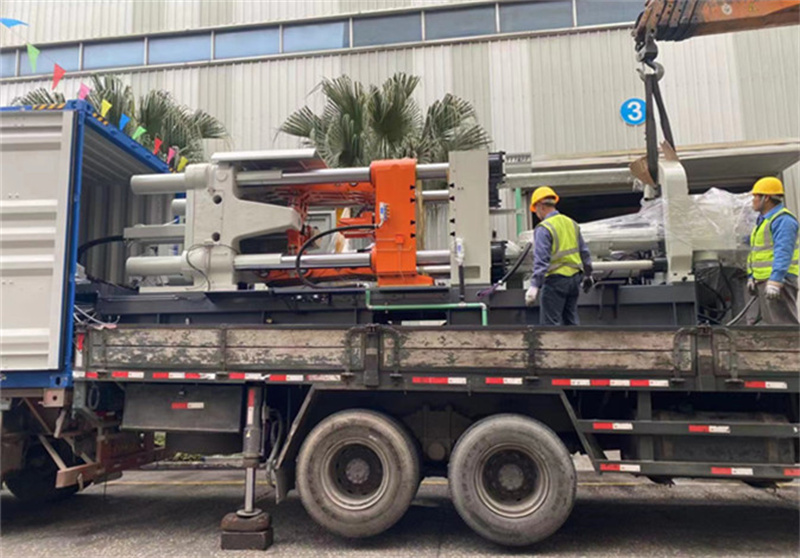
This article will explore in depth the functions, designs,
specific application cases in die-casting machines, advantage
analysis, design considerations, and future development trends
of Pipes or Vessels.
Functions of Type of Pipe or Vessel
1. Conveying function
In a die-casting machine, the primary function of a Pipes or Vessel
is to transport various substances, such as liquid
metal, coolant, lubricant, etc. Taking liquid metal as an
example, it needs to be accurately transported from a furnace
or a holding furnace to the cavity of a die-casting mold
through a specific pipe. This process requires the pipeline
to ensure the smooth flow of liquid metal, avoid blockages,
leakage and other problems, to ensure the continuity
and stability of die-casting production.
2. Storage function
Pipes or Vessels are not only used for transmission but also for
storing molten metal. Well-designed Pipes or Vessels can effectively
maintain the state of the metal and ensure the continuity
and stability of the casting process.
Some Pipes or Vessels also play a storage role in the die-casting
machine. For example, the Type of Pipes or Vessels for storing coolants or
lubricants provides a stable source of materials for the cooling
system and lubrication system of the die-casting machine.
During the die-casting process, coolants and lubricants need
to be supplied at certain time intervals and dosages. These
Type of Pipes or Vessels can release the required materials promptly
according to the working rhythm of the die-casting machine
to maintain the normal operating temperature and good working
condition of the various components of the die-casting machine.
3. Maintaining temperature function
Temperature control is crucial during the die-casting process.
The material selection and structural design of Types of Pipes or Vessels
need to ensure good thermal insulation performance to prevent
the metal from being too cold during transportation and causing
casting defects.
4. Pressure regulation function
Some Types of Pipe or Vessel also have the function of pressure
regulation. In the hydraulic system of the die-casting machine,
the precise control of the hydraulic oil pressure can be achieved
through the reasonable design of the Type of Pipe or Vessel. For
example, some accumulators, such as special Types of Pipe or Vessel,
can play a role in buffering and replenishing energy when the pressure
of the hydraulic system fluctuates, so that the working pressure
of the die-casting machine remains stable and the accuracy
and reliability of the die-casting action is ensured.
5. Separation and filtration functions
In some cases, the Type of Pipe or Vessel is also used to separate
and filter materials. For example, in the cooling system of
a die-casting machine, a filter may be set to remove impurities
from the coolant to prevent impurities from entering the cooling
pipe and mold cooling channel, affecting the cooling effect or
even damaging the equipment.
At the same time, the structural design of some pipes or
type of Pipe or Vessel can promote the separation of substances
in different phases. For example, in the exhaust system of a
die-casting machine, the gas and liquid metal are separated through
a specific Type of Pipe or Vessel structure to ensure that the gas generated
during the die-casting process can be discharged smoothly, thereby
improving the quality of the casting.
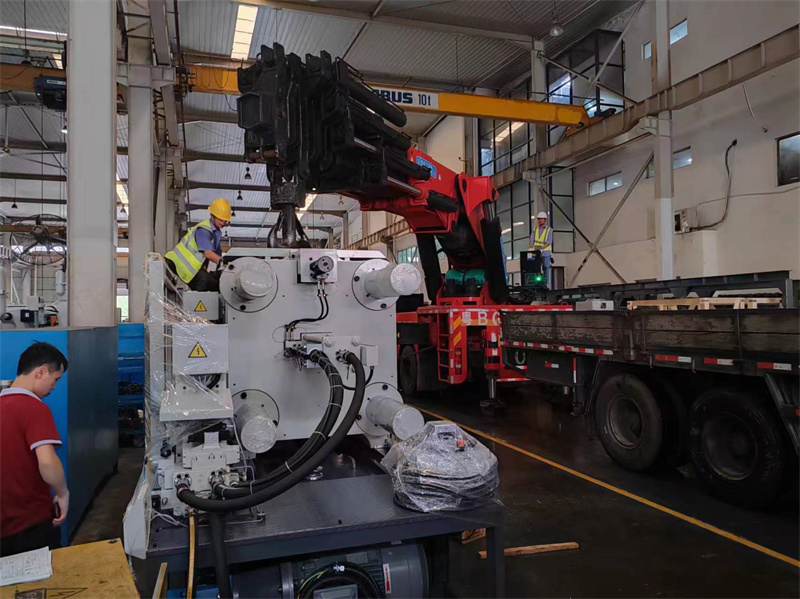
Design of Type of Pipe or Vessel
1. Material selection
The materials of Type of Pipe or Vessel are usually high-temperature
and corrosion-resistant alloy steel or aluminum alloy to
ensure that they are not easily deformed or corroded in high-temperature
environments.
1.1 High-temperature resistance
For the Type of Pipe or Vessel that transports liquid metal, since
liquid metal usually has a higher temperature, the material
needs to have good high-temperature resistance. Common choices
include heat-resistant alloy steel, graphite, and other materials.
Heat-resistant alloy steel can maintain good strength and
toughness at high temperatures and resist erosion and thermal
shock of liquid metal; graphite has excellent high-temperature
resistance and thermal conductivity, but its strength is relatively
low, and it usually needs to be used in combination with other
materials or adopt a special structural design to enhance its
strength.
1.2 Corrosion resistance
Substances such as coolants and lubricants may corrode the Type of Pipe
or Vessel, so the corrosion resistance of materials is also crucial.
Stainless steel is a commonly used corrosion-resistant material
that can maintain stable chemical properties under a variety of
corrosive environments.
In addition, some special plastic materials such as polytetrafluoroethylene
(PTFE) also have good corrosion resistance and a low friction
coefficient, which is suitable for some occasions with high
requirements for friction resistance, such as lubricant delivery
pipelines.
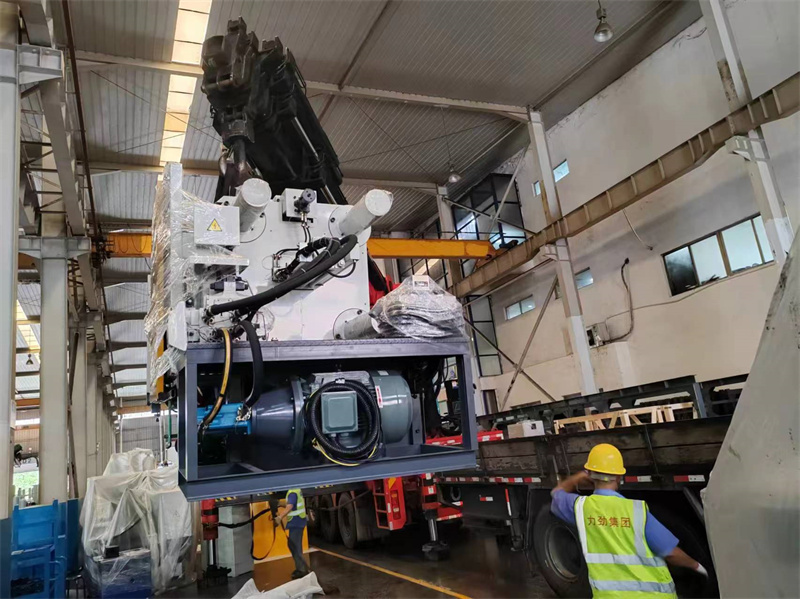
1.3 Strength and rigidity requirements
The type of Pipe or Vessel needs to withstand certain pressures and
external forces, so the material should have sufficient strength
and rigidity. In the high-pressure working environment of the
die-casting machine, such as the Type of Pipe or Vessel in the hydraulic
system, high-strength alloy steel or high-quality carbon steel
is a common choice. These materials can ensure that deformation,
rupture, and other problems do not occur under high pressure,
ensuring the safe operation of the die-casting machine.
2. Structural design
The structural design adopts fluid mechanics design and modular
design.
Reasonable fluid mechanics design can reduce the flow resistance
of liquid metal in the pipeline and ensure efficient transmission.
The diameter, length, and bending angle of the pipeline must be
accurately calculated.
At the same time, the modern manufacturing industry pays more
and more attention to flexibility. Modular design allows
type of Pipe or Vesselto be adjusted according to actual
needs to adapt to different die-casting machine models.
2.1 Shape and size
The shape and size of the Type of Pipe or Vessel should be
designed according to its specific function and installation location
in the die-casting machine. For example, the pipeline for conveying
liquid metal usually adopts a circular cross-section to reduce
fluid resistance and ensure the uniformity of flow.
Its diameter size needs to be accurately calculated according
to the production scale of the die-casting machine and the
flow requirements of the liquid metal to ensure that while
meeting the production needs, it will not cause excessive
heat loss due to the large diameter of the pipeline or
affect the flow rate and pressure of the liquid metal due
to its small diameter.
Type of Pipe or Vessel, its shape, and size should be taken into account
the capacity of the stored material, ease of use, and matching
with other parts of the die-casting machine.
For example, the shape of the coolant storage Type of Pipe or Vessel
may be designed as a square or cylindrical shape according to the
spatial layout of the die-casting machine, and its capacity
should be determined according to the cooling requirements
and working time of the die-casting machine to ensure that
sufficient coolant can be provided within a working cycle.
2.2 Connection method
The connection method between the Type of Pipe or Vessel and
other components of the die-casting machine directly affects
the sealing and reliability of the system. Common connection
methods include welding, threaded connection, and flange connection.
Welding connection has high sealing and strength, but installation
and maintenance is relatively difficult; threaded connection
is easy to install, but loosening and leakage may occur under
high-pressure and high-temperature environment, and appropriate
anti-loosening measures need to be taken; flange connection
is suitable for occasions that require frequent disassembly and
maintenance. Through the cooperation of flange and sealing
gasket, a better sealing effect can be achieved, but the cost is
relatively high.
When designing the connection method, it is also necessary to
consider the material properties of the Type of Pipe or Vessel
and the properties of the conveyed material. For example, for
some highly corrosive substances, corrosion-resistant connection
materials and sealing gaskets should be selected to prevent
leakage and corrosion at the connection.
2.3 Internal structure design
For some Type of Pipe or Vessel with special functions, their
internal structure design is also very critical. For example, in
a container with a filtering function, it is necessary to design
a reasonable filter medium installation structure and fluid
channel to ensure that impurities can be effectively filtered
and intercepted without affecting the normal flow of the fluid.
In a pressure-regulating Type of Pipe or Vessel (such as an accumulator),
pistons, airbags, and other components may need to be set inside
to realize the pressure storage and regulation functions. The
structural design must ensure that the movement of these components
is flexible and reliable, and can be well-sealed with the
container body.
Specific application cases in die-casting machines
Type of Pipe or Vessel in the hydraulic system of die-casting
machines
1. Application Scenarios
The hydraulic system of the die-casting machine is the core
power source for realizing various die-casting actions,
including mold closing, mold opening, injection, ejection,
and other actions. In the hydraulic system, pipelines are
used to connect various hydraulic components, such as oil
pumps, hydraulic cylinders, hydraulic valves, etc., to
deliver hydraulic oil to the required position. The Type of
Pipe or Vessel mainly includes oil tanks, accumulators, etc.
As a Type of Pipe or Vessel for storing hydraulic oil, the oil tank
provides a stable oil source for the entire hydraulic
system; the accumulator is used to store and release hydraulic
energy, which plays a role in balancing pressure, absorbing
shock, and replenishing energy during the operation of the
die-casting machine.
2. Working principle
When the oil pump starts, hydraulic oil is drawn from the
oil tank and transported to the hydraulic valve through
the pipeline. The hydraulic valve controls the flow direction
and pressure of the hydraulic oil according to the working
requirements of the die-casting machine so that the hydraulic
cylinder performs the corresponding action.
For example, during the mold-closing process, the hydraulic
oil enters the mold closing the hydraulic cylinder to push the
mold to close. During the injection process, the high-pressure
hydraulic oil quickly enters the injection hydraulic cylinder,
pushing the injection piston to inject liquid metal into the
mold cavity at high speed.
The working principle of the accumulator in the hydraulic system
is based on the compressibility of gas. It usually consists
of a bladder filled with gas (such as nitrogen) and a shell
filled with hydraulic oil. When the pressure of the hydraulic
system increases, the hydraulic oil enters the accumulator,
compresses the gas in the bladder, and stores the energy;
when the system pressure drops, the gas in the bladder expands,
pushing the hydraulic oil out of the accumulator, replenishing
the energy of the system, thereby maintaining the stability
of the pressure of the hydraulic system.
3. Actual effect
The working efficiency and performance stability of the die-casting
machine can be significantly improved by rationally designing
and applying the Type of Pipe or Vessel in the hydraulic
system. For example, using pipes with appropriate diameters and
wall thicknesses can reduce the pressure loss of hydraulic
oil during transportation, improve the response speed and energy
transfer efficiency of the system.
The application of accumulators can effectively absorb pressure
shocks and pulsations in the hydraulic system, reduce noise
and vibration and extend the service life of hydraulic components.
At the same time, stable hydraulic pressure can ensure the
accuracy and consistency of die-casting movements, and improve
the quality and dimensional accuracy of castings.
Type of Pipe or Vessel in the cooling system of die-casting
machines
1. Application Scenarios
During the die-casting process, some key components of the
mold and die-casting machine will generate a lot of heat.
If they are not cooled in time, they will cause mold deformation,
deterioration of casting quality, and equipment failure.
Therefore, the cooling system plays a vital role in the
die-casting machine. The pipes in the cooling system are
used to transport coolant (usually water or coolant) to the
mold and parts that need to be cooled, while the Type of Pipe
or Vessel are used to store coolant and adjust the flow and pressure
of the coolant.
2. Working principle
The coolant flows out of the coolant storage Type of Pipe or Vessel
and enters the cooling channel of the mold or other cooling parts
of the die-casting machine through the pipe. In the cooling
channel, the coolant exchanges heat with the mold or component
absorbs heat and its temperature rises, and then returns to
the coolant type of Pipe or Vessel through the return pipe.
In the Type of Pipe or Vessel, a cooling device (such as a radiator)
may be set to cool the heated coolant, so that it can be recycled
again after its temperature drops. To control the cooling effect,
devices such as flow control valves and pressure sensors are
usually set in the cooling system.
The flow control valve can adjust the flow of the coolant
according to the mold temperature and the die-casting process
requirements, thereby achieving precise control of the cooling
rate. The pressure sensor is used to monitor the pressure of
the cooling system to ensure that it is within the normal
working range and prevents the cooling effect and system
safety from being affected by excessive or low pressure.
3. Actual effect
Good cooling system design and application can effectively
reduce the mold temperature and improve the solidification
speed and quality of the casting. By accurately controlling
the flow and temperature of the coolant, defects such as
pores and shrinkage holes inside the casting can be reduced,
and the density and mechanical properties of the casting
can be improved.
At the same time, reasonable cooling can also extend the service
life of the mold and reduce production costs. For example,
in some aluminum alloy die-casting production, by optimizing
the pipeline layout and Type of Pipe or Vessel design of the
cooling system, the mold temperature is evenly distributed,
the scrap rate of castings is significantly reduced, and the
production efficiency is greatly improved.
Type of Pipe or Vessel in the lubrication system of
die-casting machines
1. Application Scenarios
The various moving parts of the die-casting machine need
good lubrication during operation to reduce friction, wear
and energy loss, and improve the operating reliability and
life of the equipment.
The pipeline in the lubrication system is responsible for
transporting the lubricant to various lubrication points,
such as the guide rails and sliders of the clamping mechanism,
and the pistons and connecting rods of the injection mechanism.
The Type of Pipe or Vessel is used to store lubricants and provide a
certain pressure and flow guarantee for the lubrication system.
2. Working principle
The lubrication system usually adopts centralized lubrication
or decentralized lubrication. In the centralized lubrication
system, the lubricant is transported from the storage Type of Pipe or
Vessel to the main pipeline through an oil pump, and then distributed
to each lubrication point through a branch pipeline.
At each lubrication point, a quantitative distributor or nozzle
maybe set to ensure that the lubricant can be accurately
sprayed to the part that needs lubrication according to the
predetermined amount.
The decentralized lubrication system is to set up a small
lubricant Type of Pipe or Vessel and oil supply device near
each part that needs lubrication to directly lubricate the part.
This method is suitable for some parts with complex structures
or limited space, but it is necessary to regularly inspect
and maintain each decentralized lubrication device. To ensure
the lubrication effect, some monitoring devices such as oil
level sensors and pressure sensors are also set in the lubrication
system. The oil level sensor is used to monitor the liquid
level in the lubricant storage Type of Pipe or Vessel. When
the liquid level is too low, an alarm is issued to remind you to add
lubricant in time.
The pressure sensor is used to monitor the working pressure
of the lubrication system to ensure that the lubricant can
be smoothly delivered to each lubrication point under the
specified pressure.
3. Actual effect
The reasonable design and application of the pipelines and
containers of the lubrication system can significantly reduce
the wear of the moving parts of the die-casting machine and
reduce the probability of equipment failure. Good lubrication
can improve the operating efficiency of the equipment, reduce
energy consumption, and also help improve the surface quality
of the casting.
For example, maintaining good lubrication between the guide
rails and sliders of the clamping mechanism can make the
clamping action more stable and smooth, reducing the clamping
error, and thus improve the dimensional accuracy and production
qualification rate of the casting.
In addition, regular maintenance and upkeep of the lubrication
system, and replacement of filters and lubricants can ensure
the long-term stable operation of the lubrication system and
extend the overall service life of the die-casting machine.
Case 1: Automotive parts production
In an automotive parts manufacturing plant, an efficient
liquid aluminum delivery pipeline system is used. The system
ensures that the temperature loss of liquid aluminum during
the delivery process is less than 5% through optimized
fluid mechanics design. This design increases the qualified
rate of castings by 20%.
Case 2: Electronic product casting
In an electronic product manufacturing company, a casting
container with an insulation function is used. The inner wall
of the container is coated with a special coating, which can
effectively isolate external heat and ensure the stability
of liquid metal during the casting process. As a result,
the company's production efficiency has increased by 15%.
Advantages Analysis
1. Improve production efficiency
1.1 Stable material delivery
Pipelines or containers can ensure the stable delivery of
liquid metal, coolant, lubricant, and other materials in
the die-casting machine, avoiding production interruptions
and delays caused by untimely or unstable material supply.
For example, a precisely designed liquid metal delivery pipeline
can ensure the rapid and accurate filling of liquid metal
during each die-casting process, reduce the die-casting cycle
time, and thus improve production efficiency.
1.2 Fast response and action
In the hydraulic system and lubrication system of the die-casting
machine, the reasonable design of pipelines and containers can
achieve rapid pressure build-up and energy transfer, so that
each actuator can respond quickly to instructions and complete
actions such as mold closing, mold opening, injection, and
ejection. At the same time, a good cooling system can quickly
reduce the mold temperature, shorten the cooling time of the
casting, further speed up the production rhythm, and increase
the output per unit of time.
1.3 Support for Automated Production
Modern die-casting machines usually use automated control systems,
and pipelines and containers, as important components of the
die-casting machine system can work well with automated control
systems. For example, sensors are used to monitor material flow, pressure,
liquid level and other parameters in pipes and containers in real time,
and the data is fed back to the control system. The control system
can automatically adjust the working parameters of the die-casting
machine according to the preset program to achieve automated production
and improve production efficiency and consistency.
2. Improve product quality
2.1 Accurate process control
The application of pipes and containers in die-casting machines helps
to achieve accurate control of die-casting process parameters. For
example, by controlling the flow and temperature of the coolant, the
cooling rate of the mold can be accurately adjusted, thereby affecting
the solidification process and microstructure of the casting. The
appropriate cooling rate can reduce defects inside the casting, such
as pores and shrinkage holes, and improve the density and mechanical
properties of the casting. At the same time, stable liquid metal
delivery and accurate injection pressure control can ensure the
dimensional accuracy and surface quality of the casting and reduce
the scrap rate.
2.2 Uniform temperature distribution
In the die-casting process, the temperature uniformity of the mold is
crucial to the quality of the casting. Well-designed cooling pipes
and containers can achieve uniform distribution of mold temperature
and avoid deformation, cracks and other problems in the casting caused
by excessively high or low local temperatures. For example, by
adopting a reasonable cooling pipeline layout and flow distribution,
various parts of the mold can maintain a similar temperature during
the die-casting process, thereby ensuring quality stability and
consistency of the castings.
2.3 Effective removal of impurities
Some pipes or containers have filtering and separation functions,
which can remove impurities from liquid metal, coolants, and
lubricants.For example, setting a filter in the liquid metal
delivery pipeline can prevent impurities from entering
the mold cavity, avoid the formation of defects such as slag
inclusions on the surface of the casting, and improve the
surface quality and internal purity of the casting. Similarly,
removing impurities in the coolant and lubricant system can
protect the pipeline, pumps, and other parts of the equipment,
ensure their normal operation, and indirectly ensure the stability
of die-casting production and product quality.
3. Reduce production costs
3.1 Reduce equipment maintenance and replacement costs
Reasonable design and selection of materials and structures
for pipes and containers can improve their service life and
reliability, and reduce the maintenance frequency and repair
costs of equipment. For example, using corrosion-resistant and
high-temperature resistant materials to make pipes and containers
can reduce leakage and damage caused by corrosion and wear.
At the same time, a good lubrication system can reduce the wear
of moving parts, extend the service life of equipment, and
reduce the replacement cost of equipment.
3.2 Improve energy efficiency
By optimizing the design of pipes and containers, such as reducing
fluid resistance and improving heat exchange efficiency, the
energy consumption of the die-casting machine during operation can
be reduced. For example, a reasonably designed cooling pipe can
improve the heat exchange efficiency between the coolant and the
mold, reduce the amount of coolant and the energy consumption of
the cooling system. Similarly, in the hydraulic system, the use
of pipes with appropriate diameters and wall thicknesses can
reduce pressure loss, improve the working efficiency of the oil
pump, reduce energy consumption, and thus reduce production costs.
3.3 Reduce scrap rate
As mentioned earlier, pipes and containers play an important role
in improving product quality and can effectively reduce defects
and scrap rates of castings. Reducing the scrap rate means
reducing the waste of raw materials and the loss of production
costs. For example, every percentage point reduction in the scrap
rate can bring considerable economic benefits to large-scale
die-casting production companies, including comprehensive benefits
such as saving raw material costs, reducing processing costs,
and improving production efficiency.
Design considerations
1. Compatibility with die-casting machines
1. 1 Size and space layout
The size of the pipeline and container should be designed according
to the overall size and structure of the die-casting machine to
ensure that it can be reasonably installed and arranged in a
limited space. At the same time, the relative position relationship
with other parts of the die-casting machine should be taken
into account to avoid interference and collision. During the design
process, it is necessary to fully consider the convenience of
operation and maintenance of the die-casting machine and leave
enough space for the inspection and replacement of pipelines
and containers.
1.2 Working parameter matching
The design of pipelines and containers should match the working
parameters of the die-casting machine, including pressure, flow,
temperature, etc. For example, the pressure resistance of the
liquid metal delivery pipeline must meet the highest pressure
requirements in the die-casting process, the flow and heat
dissipation capacity of the cooling pipeline must be adapted to
the cooling requirements of the die-casting machine, and the
oil supply pressure and flow of the lubrication pipeline must
be able to ensure that each lubrication point is fully lubricated.
Only when the working parameters match can the pipeline and
container operates normally and plays its due role and at the
same time, it can also avoid equipment damage and failure caused
by overload or mismatch.
1.3 Compatibility of interfaces and connection methods
The interfaces and connection methods between pipes and containers
and other parts of the die-casting machine must be compatible
to ensure reliable connection and sealing. When designing, the
materials, shapes and sizes of different parts should be taken
into consideration, and appropriate connection methods, such
as welding, threaded connection, flange connection, etc., should
be selected, and the strength and sealing of the connection
parts should be ensured to meet the requirements. At the same
time, attention should be paid to the operability and maintenance
convenience of the connection method so that it can be easily
disassembled and replaced when necessary.
2. Safety
2.1 Pressure safety
For pipes and containers under pressure, such as some parts
of hydraulic systems and liquid metal delivery systems, strict
pressure design and safety assessment must be carried out.
Appropriate materials and wall thicknesses should be selected
according to the working pressure to ensure that they can
withstand the specified pressure without rupture or leakage.
At the same time, safety devices such as safety valves and
pressure sensors should be set up. When the pressure exceeds
the set value, pressure relief and alarm can be carried out
in time to ensure the safety of operators and equipment.
2.2 High-temperature safety
In cases involving high-temperature liquid metal and a
high-temperature working environment, effective insulation
and protection measures should be taken to prevent the scalding
of personnel and damage to equipment. For pipes and containers
that transport liquid metal, insulation materials should be
used to wrap them to reduce heat loss and the impact on the
surrounding environment. At the same time, warning signs should
be set up to remind operators to pay attention to high-temperature
hazards and avoid accidental touch. During the design and
installation process, thermal expansion factors should also be
taken into account, and corresponding compensation measures
should be taken to prevent damage to pipes or containers due to
thermal expansion and contraction.
2.3 Leakage safety
Preventing leakage of pipes and containers is an important part
of ensuring the safe operation of die-casting machines. When
designing, high-quality sealing materials and sealing structures
should be selected to ensure that the connection parts are
completely sealed.
3. Convenient maintenance
The design should take into account the convenience of maintenance.
Structures that are easy to disassemble and clean can reduce the
difficulty and cost of later maintenance.
4. Environmentally friendly design
The modern manufacturing industry pays more and more attention to
environmental protection. Design should minimize resource consumption
and environmental impact. The use of recyclable materials is also a trend.
Future development trends
1. Intelligence
The design of pipes and containers in the future will gradually
develop towards intelligence, equipped with sensors to monitor
temperature and pressure in real-time to ensure stable operation
of the system.
2. 3D printing technology
The introduction of 3D printing technology will make the design
of pipes and containers more flexible and able to meet complex
structural requirements.
3. Sustainable development
With stricter environmental regulations, future designs will pay
more attention to sustainability, and the use of renewable
materials and energy-saving technologies will become the norm.
Conclusion
The application of pipes or containers in die-casting machines
directly affects production efficiency, cost, and product quality.
Through reasonable design and material selection, companies can
optimize the casting process and improve their competitiveness.
With the advancement of technology, future pipes and containers
will be more intelligent and flexible, helping the sustainable
development of the die-casting machine industry.
I hope this article can help readers deeply understand the
importance of this key equipment and make full use of them
in practical applications.
We are LK Die die-casting machine Authorized Official Agent
for Egypt(EGY),Saudi Arabia(KSA),United Arab Emirates(UAE)
The Islamic Republic of Iran(Iran),Qatar(QAT),
The State of Kuwait(Kuwait), The Middle East
Contact us to discuss the details of your project and we'll
be happy to provide you with a review and quote.
Learn more about our die-casting services through:
https://www.zazdiecasting.com/ and https://ae.zazdiecasting.com/
OTHER CONTENT
-
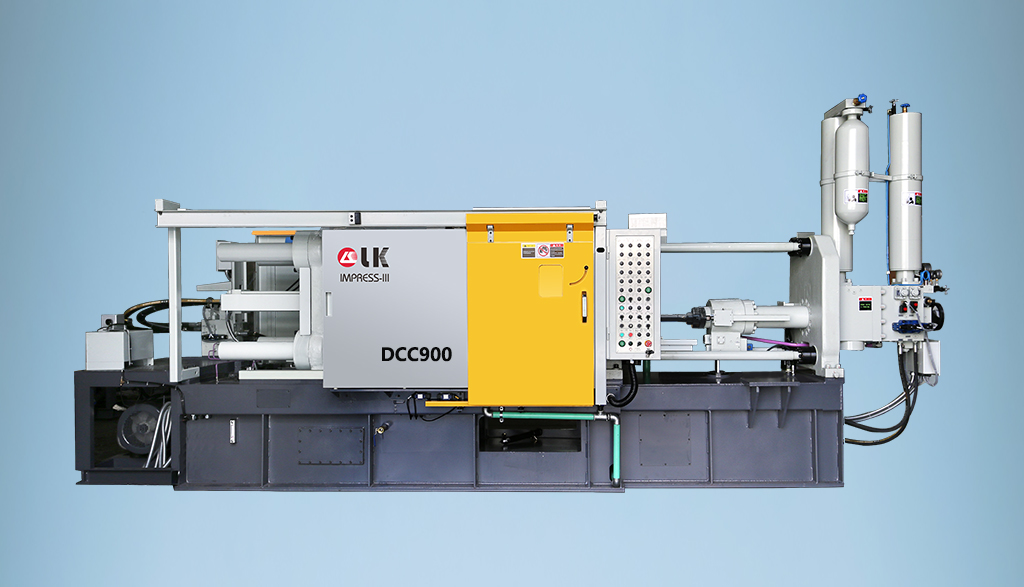
2024-09-19 14:16:15 LK Cold Chamber Die Casting Machine DCC900 Locking Force: 9000KN Die Height: 400-1000mm Space Between Tie Bars: 930x930mm Shot Weight: 13.5Kg Casting Area Max:2250c㎡
More -
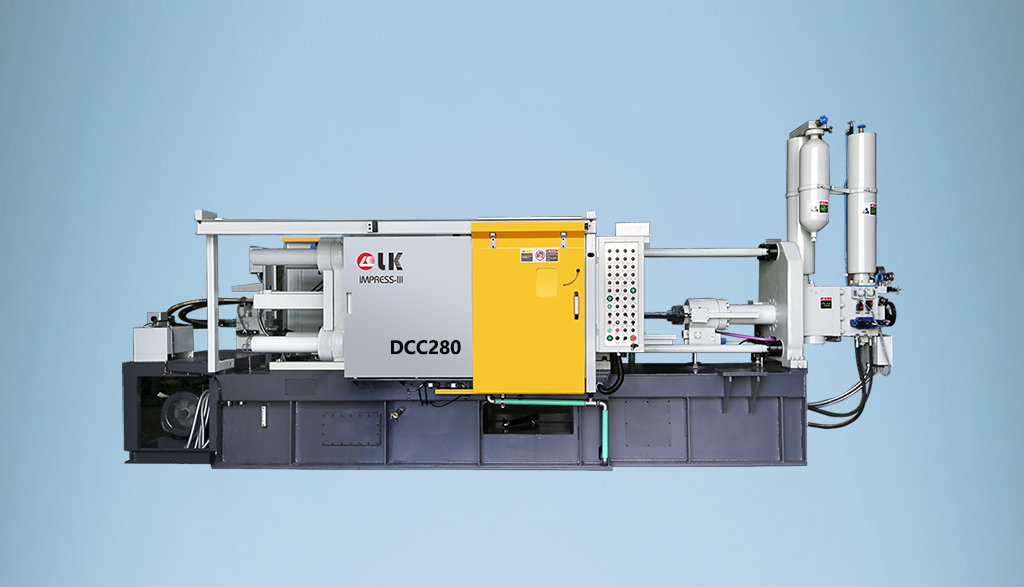
2024-09-19 14:11:06 LK Cold Chamber Die Casting Machine DCC280 Locking Force: 2800KN Die Height: 250-650mm Space Between Tie Bars: 560x560mm Shot Weight: 2.9Kg Casting Area Max:700c㎡
More -
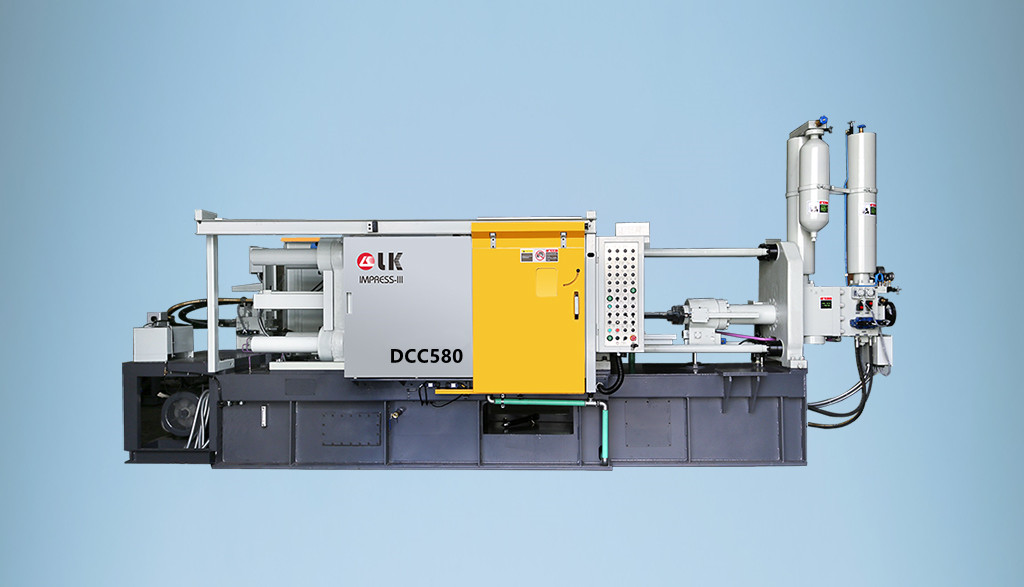
2024-09-19 10:23:07 LK Cold Chamber Die Casting Machine DCC580 Locking Force: 5000KN Die Heigh: 350-850mm Space Between Tie Bars: 760x760mm Shot Weight: 6.9Kg Casting Area Max:1250c㎡
More -
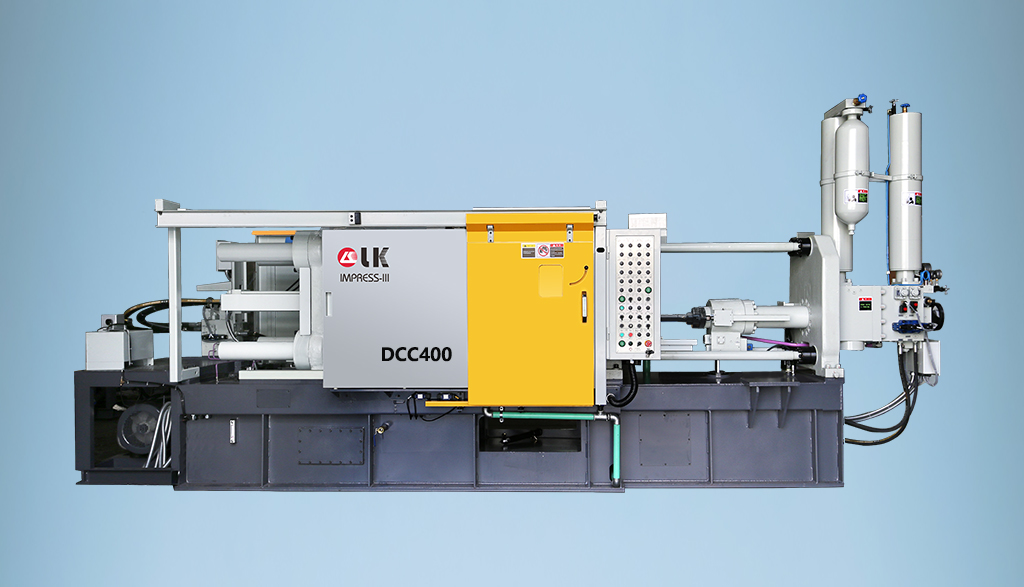
2024-09-19 10:11:20 LK Cold Chamber Die Casting Machine DCC400 Locking Force: 4000KN Die Height: 300-700mm Space Between Tie Bars: 669x669mm Shot Weight: 4.7Kg Casting Area Max:1000c㎡
More

